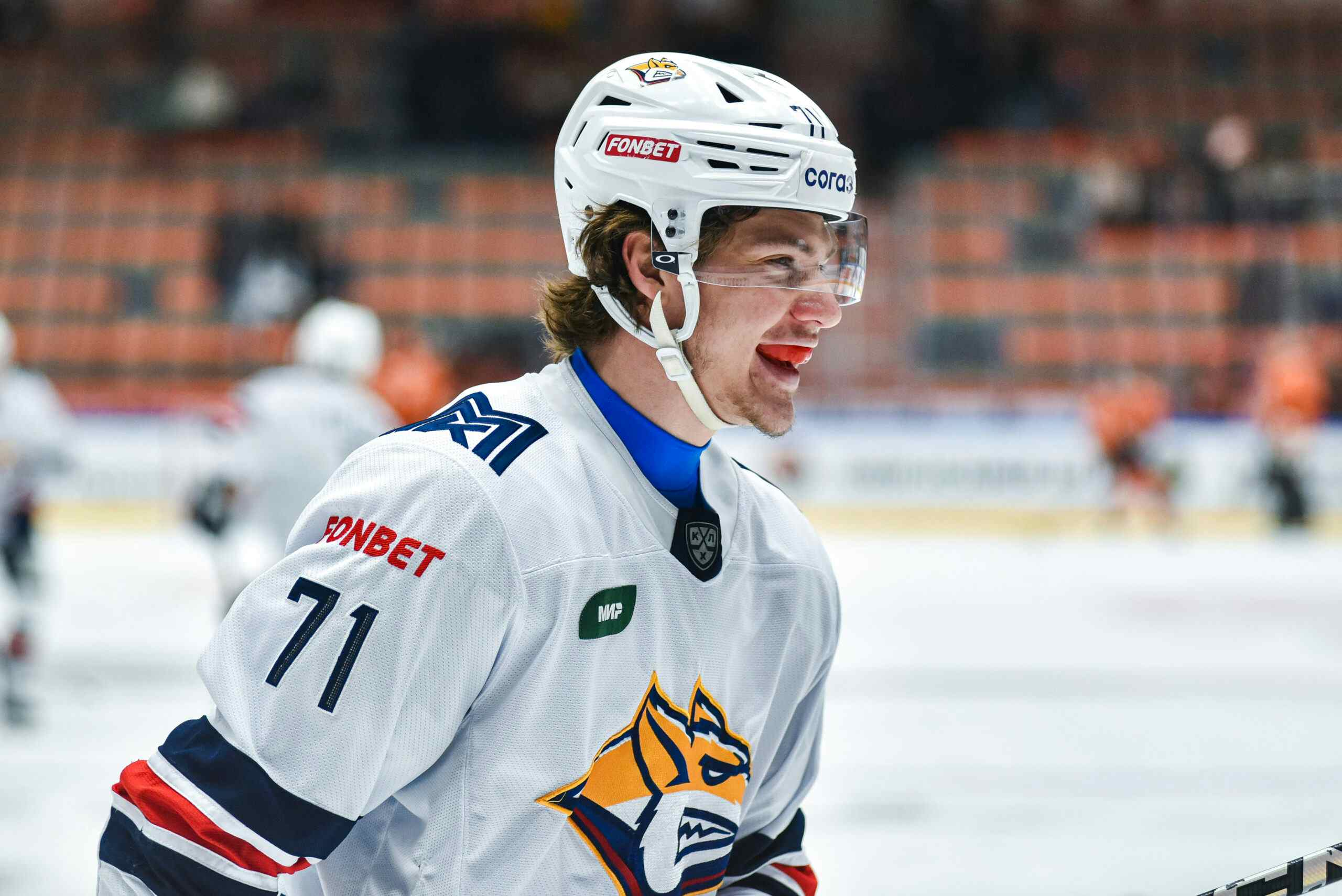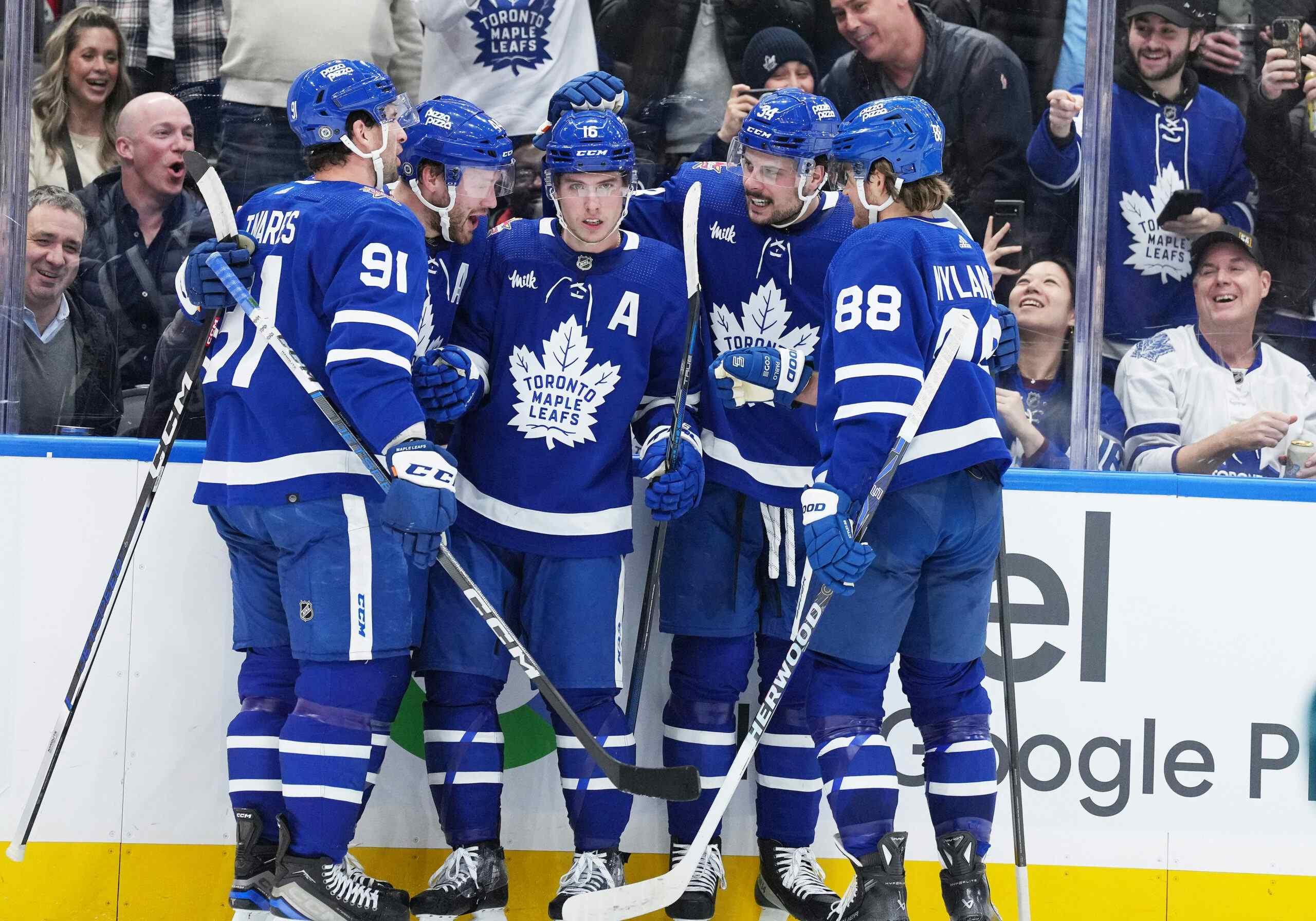What’s eating the Leafs penalty kill? Part 2!
By Cam Charron
10 years ago
Or, perhaps “struggles” is an unnecessarily polarizing word. “Concerns” could be more appropriate. The Leafs do have the 7th best penalty kill in the NHL, via traditional measures. Clicking at 85.3%, the Leafs are hanging around where they were last season at 87.9% when they were second in the league.
The noticeable difference between the Leafs 2013 penalty kill and the Leafs 2014 penalty kill is the amount of shots they’ve given up when down a man. At 4-on-5 last season the Leafs allowed 41.9 shots against them per 60 minutes. They were 5th in the league in that regard. This season, Toronto has given up 68.5 shots against per 60 while on the PK, down to 27th in the league and scrunched between Edmonton and Buffalo.
What’s held the Leafs in games on the PK has been the goaltending. Nobody should expect Jonathan Bernier and James Reimer to continue having a PK save percentage of .938. That’s a silly number and way too far above the average (generally between .880 and .900) that teams and goalies exhibit over a full season.
So why are the Leafs giving up so many shots? Some theories:
- They’re winning 32.8% of draws at 4-on-5, while they were winning 50.5% of them last season.
- Nik Kulemin and Mark Fraser are out.
A commenter in yesterday’s post pointed out that there is a small, but not worth ignoring, correlation between faceoffs and shots against. I think faceoffs can be used to point to problems with individual, outlying teams like the Leafs than generally applied to the league. Why faceoff percentage may not explain, say, Dallas’ struggle killing penalties there’s a chance it could affect the Leafs.
Last night I stayed up until the wee hours watching video of ever Leafs 4-on-5 situation in the first nine games, counting entries and recording shots. Basically, the idea was to find out how the opposition gained the puck and their success in each of those situations. About midway through I got the idea to track scoring chances and zone exits, but… may have to save those for another day.
I only counted entries, and I kept the clock going until a whistle (even after a clear), or until the opposition entered the zone a different way. Neutral and defensive zone sequences were omitted from the below chart, but the time on ice they ate up count in the total.
Here’s how the opposition generated its shots:
| Entry Type | Entries | Shots | Goals | TOI | Shots/60 | Shots/Entry |
|---|---|---|---|---|---|---|
| Carry-Ins | 76 | 35 | 3 | 24.9 | 84.2 | 0.46 |
| Total | 169 | 65 | 4 | 57.0 | 68.4 | 0.38 |
| Faceoffs Won | 33 | 16 | 1 | 14.4 | 66.9 | 0.48 |
| Dump-Ins | 23 | 9 | 0 | 8.9 | 60.9 | 0.39 |
Miscellaneous | 4 | 1 | 0 | 1.2 | 51.4 | 0.25 |
| Faceoffs Lost | 18 | 4 | 0 | 5.1 | 46.9 | 0.22 |
I don’t have data for last year’s team, but I doubt they were allowing 91.8 shots per 60 against on carry-ins. Carrying the puck in is generally preferable to chipping and chasing it, especially when you’re a man up. Even if you include “failed attempts at carrying the puck into the zone” (which I have here) you still wind up with more shots per entry compared to dump-ins. It’s just the best way to get into the zone because you don’t have to establish possession.
You can see in the column on the far right that the opposition generates about 20% more shots when they try and skate it in as opposed to carrying it in.
Faceoffs
What makes me think that faceoffs isn’t the main concern is that the Leafs have been giving up a fair amount of shots against on lost draws as well. They’re 18-33 on defensive zone draws, which doesn’t seem too far outside the range of random variation. If you gave the Leafs six more faceoff wins and six fewer faceoff losses, just by taking average rates you can see it doesn’t really move the needle for shot prevention:
| Number | Shots | Shots Prevented | |
|---|---|---|---|
| Wins | +6 | 0.48 | 2.91 |
| Losses | -6 | 0.22 | -1.33 |
| Total | 1.58 |
As you can see, the Leafs have problems clearing the puck once they’ve established possession.
Fatigue
It seems that the team is giving up way more shots in every situation than they were a year ago. From having watched all these penalty killing opportunities back-to-back, turnovers are just one issue. It seemed (and I have nothing to quantify this with) they were losing a lot of puck battles, and every scrum faceoff or ruck along the boards resulted in the opposition gaining control. They do have the extra man, so you’d figure, but these puck battles resulted in a lot of second chance opportunities.
Thus far, 13 sequences have resulted in more than one shot, and two goals have resulted from those sequences. There’s been about 11 seconds on average between shots on goal in multi-shot shifts which means they aren’t all rebounds, they’re mostly those dreaded “to the line and not out” extending shift lengths. Those numbers have been increasing since the Nashville game when these Leafs problems on the PK really began.
I was listening to Leaf Report podcast with James Mirtle and Jonas Siegel and James brought up the point that the Leafs have been so short in the lineup that they’re getting tired, which is why they can’t out-work the opposition. I can’t compare it to last year since those games are well out of memory, but opponents have been extending shifts clearly between games 1-4 and games 5-9.
| Multi-Shot Sequences | Total Sequences | % | |
|---|---|---|---|
| Games 1-4 | 4 | 88 | 4.55% |
| Games 5-9 | 9 | 81 | 11.11% |
Is that accounting for all the extra shots? Opponents have generated 23 shots off of multi-shot sequences since the Nashville game, which seems like it could be an issue and account for the discrepancy between the Leafs in 2013 and Leafs in 2014:
| 5v4 SA/60 | |
|---|---|
| Leafs 2013 | 41.9 |
| Leafs 2014 | 68.5 |
| Leafs 2014 minus 18 SOG | 49.5 |
I took away 18 shots on net rather than 23, because it seems reasonable to have one sequence a game you allow one or more shots. That’s what was happening through games 1-4.
Conclusion (?)
A combination of a loss of key personnel and fatigue? That seems reasonable. I hate to attribute fatigue to a problem that surfaced five games into the season, but the Leafs have been running with a patchwork roster so far this year and are allowing way more multi-shot sequences on the PK than they ought to be.
I’ll keep on monitoring shots against, and if it’s still an issue when Fraser and Kulemin are back, then it’s time to panic. Again, let me reiterate that this isn’t a huge problem the Leafs need to fix, but it’s an area of concern that ought to be pointed out.
Recent articles from Cam Charron





